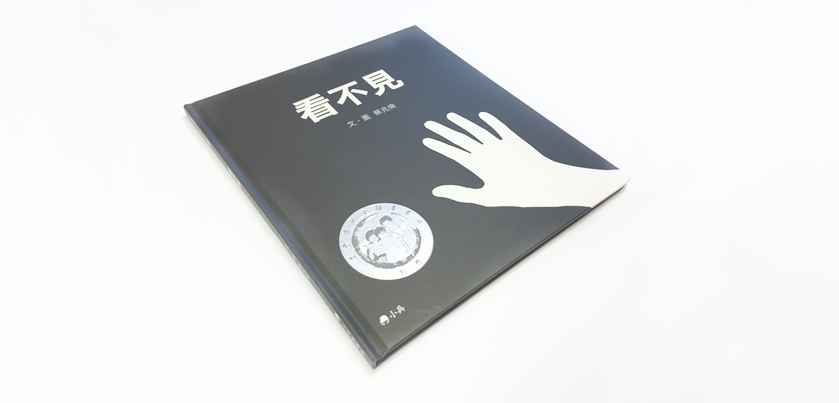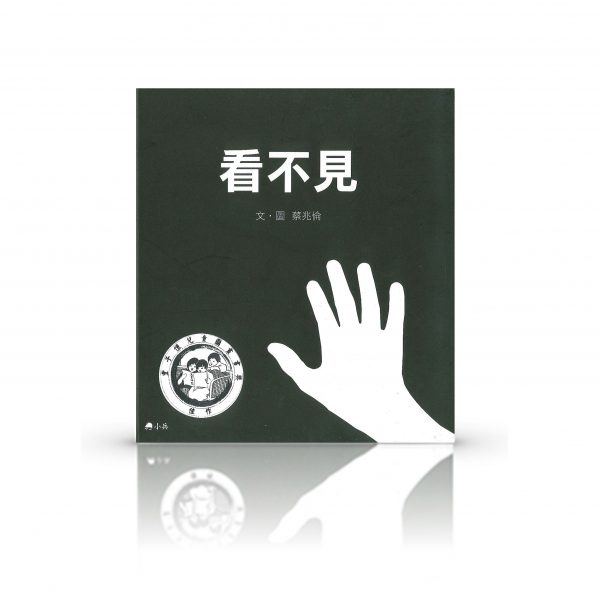This book is about a boy who “can't see” who tries to get from his house to the park. He doesn't depend on his vision, instead he uses his other senses to guide his way through the environment around his life. The reader can follow this one-person narrative through his short journey, experiencing the difficulties of relying on other senses with his sharp senses of listening and smelling mixed with worry, fear, and confusion. This book allows children to understand the meaning of being blind, and lets them understand the inconveniences in the lives of those who cannot see, so that children can help those who are disadvantaged, and have a bigger sense of gratitude of what they have.

The 3rd Picture Book Award Winning Books
Synopsis
Book Details
- Author:Chao-Lun Tsai
- Illustrator:Chao-Lun Tsai
- Publisher: Little Soldier Publishing Company Ltd.
- ISBN:978-986-6544-93-4
- Age Range:6-12
- Publication Date:02 – 2012
Judge's comment
This work guides readers to the opening with simplicity and impact. When turning to the flyleaves, it can be seen that there is a man with a cane and a white partial silhouette of a dog at a distance from the man, suggesting that this is a picture book relating to visual impairment. As soon as entering the story, readers are enveloped by complete darkness which produces the visual perception, not seeing anything. Then the image shows that the character fumbles about to go downstairs and out of the house. When the character faces the external environment full of noises and sounds, he confronts the fear of taking each single step… Not until the turning point in the middle of the story—someone saying “It's scary! I don't want to play anymore!”—does it reveal that it is a role-playing in which the children wearing eye masks (implicitly implied by an icon in the title page) to experience the world of darkness. As the children's visions recover, the author arranges two color sets of folded spreads: in the playground at the park, children play with adults happily to their hearts, and there are several imaginary figures inserted into the picture, such as a king wearing crown and casual clothing, Mona Lisa holding a cat, giant King Kong… Amongst tunes of black and white, suddenly these colorful scenes appear, thus becoming comparatively bright and brilliant.
The word text narrates in simplicity, captures the voice of children, and expresses the mental condition through language in daily life. The author puts efforts on edutainment and earnestly reminds children to sincerely experience the world different from theirs (which I am afraid that it seems not necessary).
The whole illustration design of the book is unconventional and manipulates pictorial codes and symbols well. For example, the monster figure in the scene is a metaphor for the implicit danger and threat in reality; the circle figure as a ditch cover beneath the feet of the blind turns into a planet in the universe at the next page, expressing that children are so in fear as if they were in the outer space; the different codes respectively represent different sounds, revealing visible “visual perception” by invisible “auditory perception,” etc… These are innovative and original techniques.
Hsu Su-Hsia (Professor in Department of Arts and Design National Hsinchu University of Education and picture book creator)
Winners
Born in Taiwan, Chao-Lun Tsai has been an animator, art editor, and more. He is now, and has been for many years, an illustrator for comics and children's books.
He has created two works of his own, I Can't Sleep (published by Mandarin Daily News), which won the First Prize of the 4th Mandarin Daily News and the “Shepherd's Pipe Award”; and I Can't See (published by Bin Ton), which won Best Children and Juvenile Book at the 37th Golden Tripod Awards.
Video:







